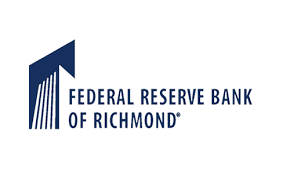Activists demand greater public accountability from Richmond Federal Reserve Bank
George Copeland Jr. | 10/28/2021, 6 p.m.
The streets of Richmond’s financial district echoed with calls for accountability last week as activists gathered outside the Federal Reserve Bank of Richmond to call for better transparency and representation following a series of scandals among the nation’s banking leadership.
Among the speeches and chants from those present at the Oct. 19 rally, which included members of SPACEs in Action and Action NC, was a demand that the Richmond Federal Reserve establish a better process to select its board of direc- tors and presidents that ensures greater public involvement and a more diverse leadership.
“It is of urgent importance that the public members of the board actually represent the public,” said Apryl Lewis of Action NC. “We are here to demand representation for our community.”
SPACEs in Action and Action NC are part of the Center for Popular Democracy’s national Fed Up Campaign, which has been working to ensure the Federal Reserve’s actions are in the economic interests of all in the country, from full employment for working families to increasing wages.
Its recent response was driven by the resignations of the presidents of the Dallas and Boston Federal Reserve Banks after revelations that they were trading corporate stocks for their own benefit. The public gathering was just one part of the Fed Up Campaign’s Full Employment Defenders National Week of Action. Similar events took place in other regional federal reserve cities in Kansas City, Chicago and Boston.
The need for this process is clear for advocates, as Federal Reserve board members work every six weeks to determine what policies and adjustments are needed for the economy. A lack of representation could leave critical community needs and issues unaddressed, and amplify already present racial, gender and class disparities.
According to reports from the Fed Up campaign, 56 percent of the 105 regional federal reserve directors are men, 66 percent are white and 75 percent are from the business or financial sectors. The disparity among presidents is even greater, with 83 percent being white and 75 percent male.
“The job of the public members of the Fed’s board is to represent the economic interests of the community. But every year, board vacancies are filled by a process that’s kept far from the public eye,” said Dr. Blanche Penn of Action NC.
“Across the entire regional Fed bank system, we see boards of directors that are dominated by CEOs of the financial industry and big corporations, and that don’t look anything like the community they are supposed to represent.”
A similar lack of diversity is present in the Richmond Federal Reserve, where 63 percent of the board members are white and 38 percent are Black, with no Latino or Asian representation. In addition, 63 percent of the Richmond bank’s board members come from banking or business, 25 percent are from nonprofits and 13 percent are from academia, with no labor representation present.
The campaign’s demands for a more equitable leadership and membership include a nomination process that solicits and accepts more public input; publishing the criteria and timeline for selections, as well as the names of candidates being considered; and holding public forums and opportunities for the public to submit questions to candidates.
“Put the folks directly impacted by these so-called apolitical, economic decisions at the table and ask them how they really live,” said Aaron DeVaul of SPACEs in Action. “They might learn something.”
Beyond these rallies, campaign members also delivered a letter with their demands to the Richmond Federal Reserve leadership last week, with the campaign expecting a meeting with leadership to begin conversations on potential improvements.







